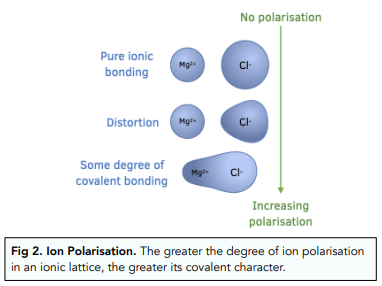Thermodynamic - Calculations involving Born-Haber Cycles (A-Level Chemistry)
Calculations involving Born-Haber Cycles
Calculations with Born-Haber Cycles
Key Terms
A Born-Haber cycle is a thermochemical cycle that includes every enthalpy change that is involved in an ionic compound formation process. This is possible due to the principle of Hess’s Law.
Hess’s Law states that the total enthalpy change of a chemical reaction is the same independent of the route taken from products to reactants.
Calculating Lattice Enthalpies
Born-Haber cycles illustrate the relationships between the different enthalpy changes involved in the formation of an ionic compound. This process is made up of different stages, each of which corresponds to a different enthalpy change.
If you have the values for all of the stages but one, you can work out the value of the unknown stage, using the principle of Hess’s Law.
Let’s revisit the Born-Haber Cycle for NaCl we looked at in the previous Chapter.

ΔHf represents the lattice enthalpy of formation of sodium chloride. To work out the value of ΔHf we are going to use the other values in the cycle.
ΔHf = -ΔHe – ΔHd – ΔHc – ΔHb + ΔHa
= – (-349) – (+496) – (+107) – (+122) + (-411)
= -787kJmol-1
Therefore ΔfH = -787kJmol-1 so the lattice enthalpy of sodium chloride is -787 kJ mol-1.
Comparing Lattice Enthalpies from Born-Haber Cycles
Lattice enthalpies from Born-Haber cycles are sometimes higher than the values calculated from assumptions based on the perfect ionic model.
This is because many ionic compounds are not purely ionic but show some covalent character.
Assumptions of Perfect Ionic Model
The perfect ionic model assumes that:
- All ions are completely spherical.
- All ions have an even charge distribution.
- The attractions are purely electrostatic.
- There is no covalent character in the bonds, it is purely ionic.
The perfect ionic model is entirely theoretical, and it is seen that there is deviation from experimentally calculated values of lattice enthalpy using a Born-Haber cycle: The experimentally calculated value is more exothermic than the theoretical value.
This is evidence that many ionic compounds in fact show some degree of covalent character.
Reasons for Covalent Character
- The experimentally calculated value is more exothermic than the theoretical value. This is evidence of covalent character in the bonding within ionic lattices.
Example: Magnesium Chloride

For MgCl2, the experimental lattice enthalpy of formation is more exothermic. This is evidence that there are stronger bonding forces present than purely ionic.
- Magnesium ions are highly polarising. This is due to magnesium ions being relatively small with a highly positive charge of +2. Smaller, positively charged ions are more polarising.
- Chloride ions become polarised. Magnesium ions can closely approach the electron density of the negative chloride ions and polarise their charge. Chlorine ions are large and hence are easily polarised. Larger, positively charged ions are more polarisable.
- This phenomenon approaches electron sharing. Charge polarisation allows there to be a degree of sharing of electrons, representing some covalent bonding, rather than pure ionic bonding.

A Born-Haber cycle is a series of steps used to calculate the lattice enthalpy of an ionic compound. It includes the formation of the compound from its elements, the ionization of the metal, the electron affinity of the non-metal, and the dissociation of the compound into its constituent ions.
Lattice enthalpy is the energy required to break apart the crystal lattice of an ionic compound into its gaseous ions. It is an endothermic process.
The higher the lattice enthalpy, the stronger the bond between the ions in the ionic compound.
The lattice enthalpy can be calculated by adding up the enthalpy changes for each step in the Born-Haber cycle. These include the enthalpy of atomization, ionization energy, electron affinity, and sublimation energy.
The enthalpy of atomization is the energy required to convert one mole of an element in its standard state into its individual gaseous atoms.
Ionization energy is the energy required to remove an electron from an atom or ion in the gas phase.
Electron affinity is the energy change that occurs when an electron is added to a neutral atom or ion in the gas phase.
Sublimation energy is the energy required to convert one mole of a solid substance into its gaseous state.
Hess’s law states that the enthalpy change for a chemical reaction is the same whether it occurs in one step or in a series of steps. This allows us to use the enthalpy changes for each step in the Born-Haber cycle to calculate the overall enthalpy change for the formation of the ionic compound.
The lattice enthalpy is affected by the size and charge of the ions in the compound, as well as the packing arrangement of the ions in the crystal lattice. As the size of the ions increases, the lattice enthalpy decreases, and as the charge of the ions increases, the lattice enthalpy increases.





Still got a question? Leave a comment
Leave a comment